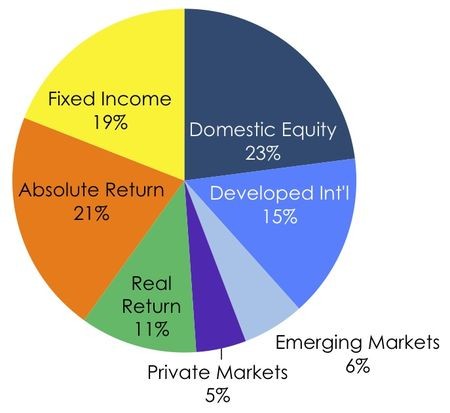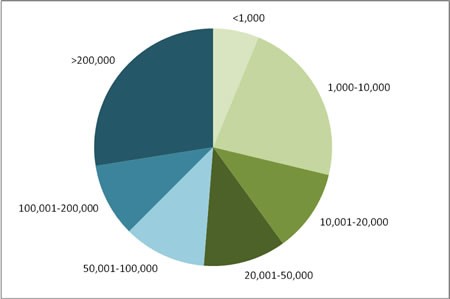Does Size Matter for Successful Endowment Investing
Post on: 22 Июнь, 2015 No Comment

Related Content
Until the financial crisis left most U.S. institutions of higher education in a precarious financial condition, there wasn’t much attention paid to those with endowment funds of under $1 billion in assets. But after the shocking double-digit losses at all schools in fiscal year 2008–’09, endowment experts such as the National Association of College and University Business Officers, the Commonfund and Cambridge Associates pointed to the relatively better results at smaller schools. They attributed the higher performance generally to differences in portfolio asset mix, such as having more fixed-income investments and fewer private partnerships. Five years on, however, there are still schools with less than $1 billion in endowment assets whose investment returns rival those of their larger brethren. The question is, in the increasingly challenging quest for alpha, does size matter?
David Salem has made it his mission to answer that question. His finding: The world’s top investors do not agree on the perfect fund size. To get at that answer, Salem, who launched the Investment Fund for Foundations in 1991, has for 20 years conducted a biannual survey to determine the ideal portfolio size. A core group of 150 participants that includes former and present Harvard Management Co. CEOs Jack Meyer and Jane Mendillo, as well as Yale University CIO David Swensen, duly send in their numbers. “A lot of people — outside observers and board members — do not appreciate sufficiently how difficult it gets [to deliver top returns] the bigger a fund gets,” says Salem, now managing partner and CIO of Windhorse Capital Management, a Boston-based wealth management firm. Setting criteria for his hypothetical fund, including a 5 percent annual withdrawal and a 30-year investment horizon, Salem has found that, like fashion, opinions on ideal fund size have varied over the past two decades, with responses ranging from a low of just $32 million to a high of $20 billion.
When it comes to ideal portfolio size and its relationship to investment success, Scott Malpass believes in the law of big endowment numbers. As CIO of the University of Notre Dame’s now $8 billion endowment, Malpass thinks $15 billion is the ideal size. The advantages include having the ability to give large allocations to the best managers; do more direct deals or coinvest in real estate and private equity; and have a more global portfolio with country specialists, especially in emerging markets. “This increased sophistication also allows you to attract and incentivize a top staff who can network and build relationships for the institution that creates a virtuous cycle of learning about and accessing top talent with limited capacity in assets under management before the broader marketplace,” says Malpass, who took over the endowment in 1989 when its portfolio was a mere $400 million.
Size isn’t the only question vexing the endowment world. Does Swensen’s recent proclamation, in the Yale University Investments Office 2012 annual report, that asset allocation has become less important to investment success than manager selection, mean that having dozens of different asset classes is not an essential ingredient for success? It’s more complicated than that, says Celia Dallas, director of investment strategy research at Boston-based Cambridge Associates. She points to timing as a critical factor in the long-term approach large institutions take in building very diversified portfolios and their willingness to tolerate underperformance in the short term. “The allocation to alternatives, especially private alternatives, feeds into that,” she says. “It can take as along as a decade, with capital being drawn down, to realize profits on that performance.”
The future of midsize endowment outperformance is clearer to San Francisco–based headhunter Charles Skorina, who specializes in asset management. “Some will retort that this is just another example of the random distribution of investment success,” he says. “We, however, are romantics and prefer to believe that talent and work count for something.”

Cambridge’s Dallas agrees on this point. “There are huge differences between schools,” she says. “Those that are doing well are very special.”
Carla McGuire, the outsourced CIO for Mercer Investment Consulting’s endowment business, also agrees. “There are CIOs out there who are able to stay competitive with bigger schools,” says the St. Louis–based former CIO of DePauw University in Greencastle, Indiana, and former director of investments at the University of Chicago. “Some schools are advantaged with business schools, a good alumni network and access to top-tier managers.”
Read more about U.S. college and university endowments in Institutional Investor‘s feature: “ Top Returns at Midsize Endowments Challenge the Yale Model ”.














